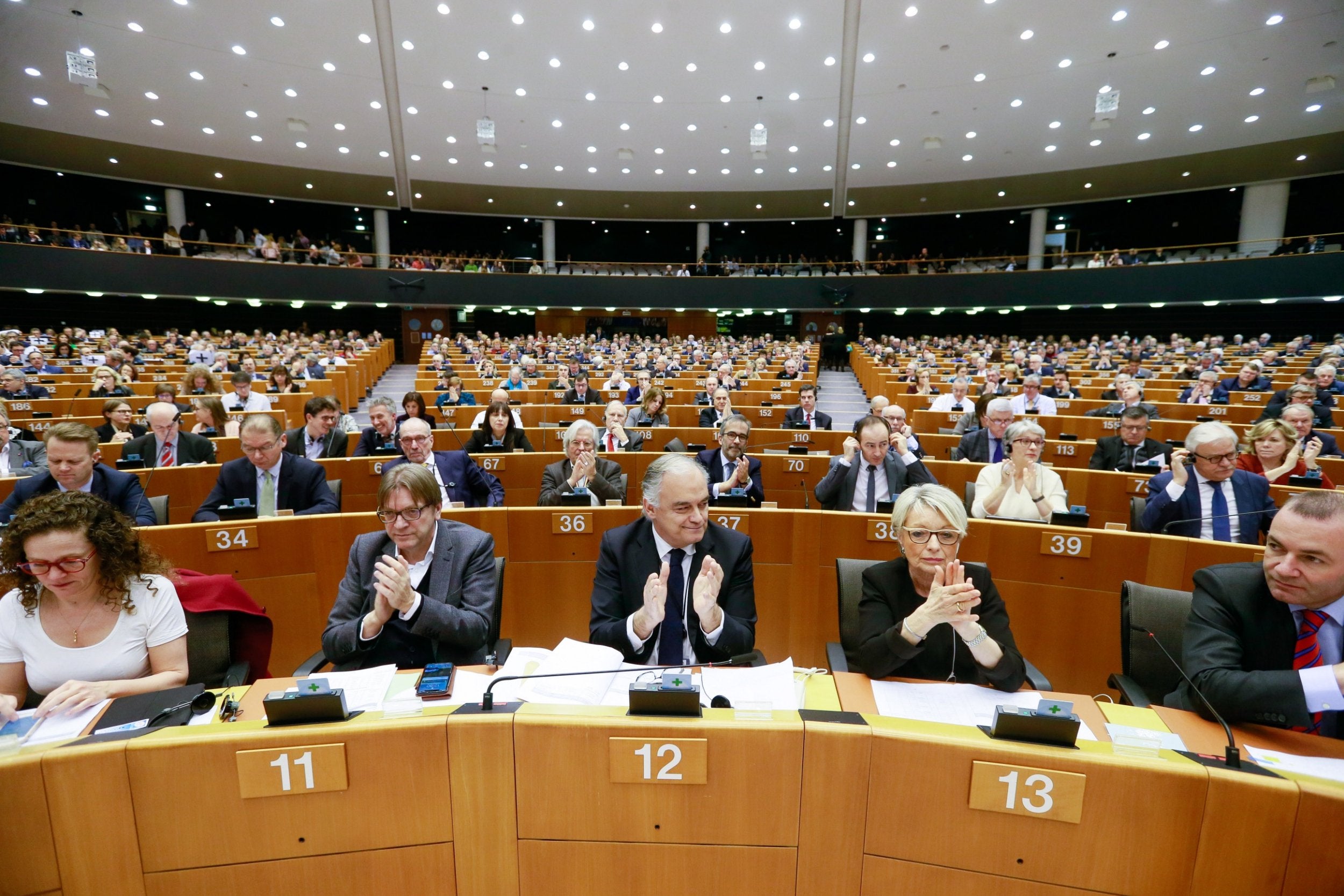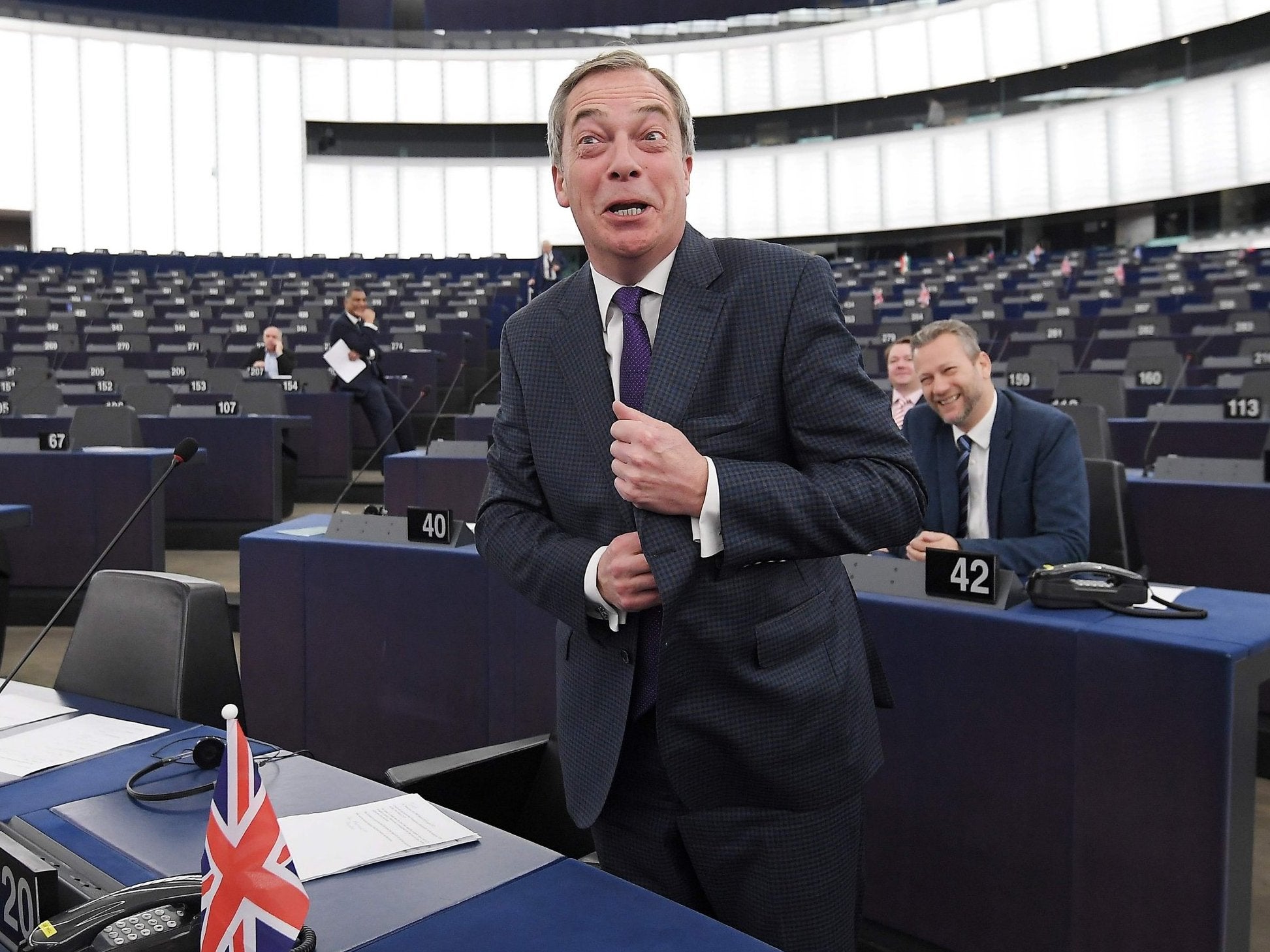The system used to elect our MEPs is more complicated than you think
The EU mandates systems of proportional representation be used to elect its Parliament, but leaves the detail to member states, as Sean O’Grady explains

The method of electing members to the European Parliament is extremely simple in principle – but fiendishly complicated in its “behind the scenes” psephological detail.
The UK, like all European countries, sends its representatives to the European Parliament in proportion to the votes cast for each party.
Simple as that.
Proportional representation (PR) differs, then, from the method used for the House of Commons where “first past the post” tends to favour parties whose votes are distributed “efficiently” across constituencies.
This means larger parties with a tendency to do well in their “marginal seats” do exceptionally well out of the system (Labour), as opposed to those which just pile up votes to generate gigantic majorities in their safe seats (the Conservatives).
Those who do worst are smaller parties, famously disadvantaged through their habit of doing OK nationally, but often failing to gain majorities in many localities. The Westminster system can thus produce perverse, exaggerated results (and has proved less effective at producing majority or stable government in the last decade – something which has hitherto been an argument in its favour).
In terms of the House of Commons, getting 5 or 10 per cent of the vote in every seat in Britain will mean winning no seats at all; but having that 5 or 10 per cent concentrated over a few counties could win you scores of seats. This is how the SNP and DUP do relatively well in general elections, compared to the more evenly spread vote for Ukip, Liberal Democrats or Greens.
Such distortions are removed under PR, which is no longer entirely alien to the British. Versions of it are used for national assembly/parliament elections in Scotland, Wales and Northern Ireland. Preferential systems of voting are used for city mayors in London and other municipalities, under a standardised system of first and second (only) preferences.
A proposal to introduce the more proportional Alternative Vote system for use in general elections was put to a national UK referendum in 2011, and rejected by 68 per cent to 32 per cent.
To the voter, PR is very easy; for returning officers and students of politics, and maths, it is rather trickier.
The EU mandates PR systems be used to elect its Parliament, but leaves the detail to member states. PR systems for MEPs across Europe fall into two main types.
The first is where you simply vote for a political party, with no allowance for discriminating between various candidates from the same or even different parties. As with Westminster elections you put a cross in a box, but to register your support for a party rather than a named person. The names of the parties’ candidates are printed on the ballot paper; but the voter has no power to rank them– it is just for your information.
The other way of doing PR is to rank your preferences of party/candidate. In some cases you might rank, say, a favourite local Liberal Democrat first, but then revert to the Conservatives for your second, third and fourth preferences. Who gets elected then depends on the elimination of the least popular candidates over several rounds, and the way in which those votes are re-allocated.
The point here is that under both PR systems the parties will receive the same proportional vote; but which politicians turn up to the European Parliament when it meets in Brussels or Strasbourg is either determined purely by party bosses (the party list system), or (to some degree at least) by the voters (the preferential voting system). Thus, if you’d prefer Rachel Johnson over Gavin Esler to be the Change UK MEP for your region, you cannot give force to that preference under the present system.
Oddly, the UK actually deploys both PR systems for the European parliament. The party list system, divided by nations/regions is used in Great Britain (England, Scotland and Wales). Here you just vote for one party with an X on the ballot paper.

But in Northern Ireland the Single Transferable Vote preferential system is used. So you can rank the candidates as you wish. Historically, this version of PR was regarded as essential to ensure a nationalist voice was heard.
A whole nation party list system for the UK could be used, in theory, but would not reflect the very different party structures in different areas of the country. So the SNP, for example, which would be standing only in Scotland, with a relatively small share of the UK population, would find itself winning virtually no representation in a UK-wide list system, even if it “won” the election in Scotland. The same goes for the distinctive Northern Irish and Welsh parties. Hence the regions and nations having dedicated allocations of MEPs based on their populations.
In any event, the actual process of counting votes and converting them into representation of MEPs is fiendishly convoluted, but the voter is oblivious to such complexities.
The principle, of course, is to ensure that if, say, the Brexit party wins a third of the vote in a given region, then it wins a third of the seats, and so on.
But how to count them? If a region had a hundred MEPs, then it would be easy; 33 per cent of the vote would yield 33 Brexit party MEPs. But that is not practical for this parliament, because the seats are divided up in much smaller chunks, as follows:
When Britain joined the then European Economic Communities in 1973, it committed to sending a delegation of MPs and Peers to the European Assembly. There were no direct elections: members were simply chosen by and from the existing members of the two houses of parliament.
South East England 10
London 8
North West England 8
West of England 7
West Midlands 7
Yorkshire and the Humber 6
Scotland 6
South West England 6
East Midlands 5
Wales 4
Northern Ireland 3
So – hypothetically – if the Brexit Party won a third of the votes in the East Midlands, and Change UK and the Labour Party also won roughly a third each (and no-one else won any votes), then they would all be entitled to one complete MEP and two-thirds each of another.
This is where the “quota” comes in (for Great Britain, not Northern Ireland). To win one of the East Midlands’ five Euro-seats would require you to gain one fifth of the vote – 20 per cent of the vote per MEP. So does a third of the vote get you one or two seats? This is where it gets difficult. The European Union offers the following worked example, in an election involving confectionery-based parties.
There are five parties contesting five seats in one region and the votes are cast thus:
Smartie Party: 100 votes
Jelly Baby Party: 80 votes
Lollipop Party: 40 votes
Kit Kat Party: 20 votes
Aero Party: 10 votes
The first seat: the Smartie Party has the most votes so the first seat goes to it (the seat goes to the candidate at the top of the list of Smartie Party candidates, independent candidates being treated as a list with only one candidate on it).
The second seat: the number of votes for the Smartie Party is now divided by 2 (i.e. the number of seats the party has plus one) so the votes are now as shown below.
Smartie Party: 50 votes (ie 100 divided by 2)
Jelly Baby Party: 80 votes
Lollipop Party: 40 Votes
Kit Kat Party: 20 votes
Aero Party: 10 votes
The Jelly Baby Party now has the most votes so it gets the second seat (which goes to the person at the top of the list of Jelly Baby Party candidates).
The third seat: the number of votes for the Jelly Baby party is now divided by 2 (i.e. the number of seats the party now has plus one), so the votes are now as shown below. The third seat thus goes to the Smartie Party, which at 50 votes now has the highest number of votes. The seat goes to the second person on the Smartie Party list of candidates.
Smartie Party: 50 votes (100 divided by 2)
Jelly Baby Party: 40 votes (80 divided by 2)
Lollipop Party: 40 votes
Kit Kat Party: 20 votes
Aero Party: 10 votes
The fourth and fifth seats: the original number of votes for the Smartie Party is now divided by 3 (i.e. the number of seats it now has plus one) to leave it with 33. So when it comes to allocating the fourth and the fifth seat, the Jelly Baby party and the Lollipop Party both have 40 votes and will be given the fourth and fifth seats. One seat goes to the second candidate on the Jelly Baby list and the other one to the first person on Lollipop Party candidate list.
The final result is:
Smartie Party: 2 seats
Jelly Baby Party: 2 seats
Lollipop Party: 1 seat
Kit Kat Party: 0 seats
Aero Party: 0 seats
This is called the D’Hondt system, after a nineteenth century Belgian mathematician – but it is only one of two main ways of calculating the quota. The other is called the Saint-Lague method, named after its inventor, a nineteenth century French mathematician.
Generally, the D’Hondt system slightly favours larger parties by tending to allocate the “last” seat to one of them. So the proportionality is reduced somewhat, as it is also when there is a smaller number of MEPs. For this reason there is some danger of a “vote splitting” effect in some of the smaller regions for the smaller parties fighting each other for basically the same group of electors – Change UK v Liberal Democrats, or Brexit party v Ukip, for example.
In Northern Ireland, by contrast, the three seats are determined via an exhaustive process of reallocating various second, third etc preferences of successive bottom placed candidates in successive rounds of counting.
Things were once much easier.
When Britain joined the then European Economic Communities in 1973, it committed to sending a delegation of MPs and Peers to the European Assembly, as it then was. There were no direct elections to the assembly: members were simply chosen by and from the existing members of the two houses of parliament. (John Prescott was an early star of the UK Labour group).
Direct elections to the renamed European Parliament arrived in 1979, with the UK adopting its traditional system of first-past-the post in multi-member, regional super-constituencies (but with PR for Northern Ireland). With some reluctance, the British agreed to fall into line with the rest of the EU and use PR for EU parliamentary elections only in 1999.
PR in the European elections is, roughly, the equivalent of a having a fully automatic car with all the autonomous aids to the driver modern technology can offer.
This makes the car smooth, sophisticated and extremely easy to use, but, if you bother to lift the bonnet and pull apart the on-board computers you will find yourself discombobulated by the intricate circuitry you are confronted by. Just as well you don’t have to take a peek at the machinery behind the Euro-elections.
Join our commenting forum
Join thought-provoking conversations, follow other Independent readers and see their replies
Comments